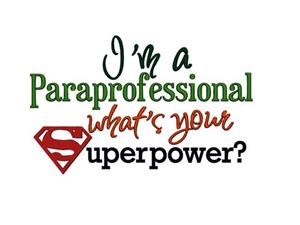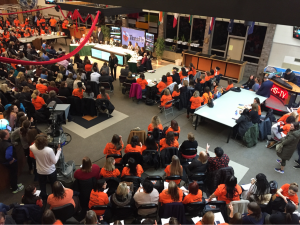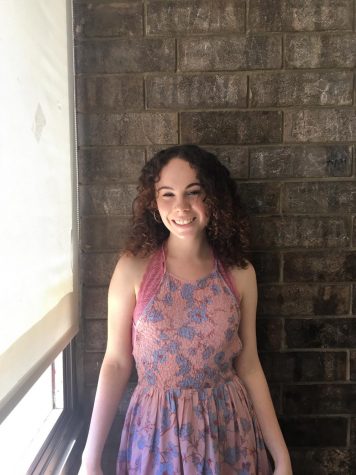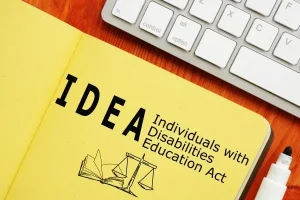Paraprofessionals: The Unsung Heroes of the American Classroom
March 14, 2018
When we think of education and the individuals responsible for teaching our youth, we almost always think of teachers and the traditional classroom setting. We often ignore the paraprofessional, the unsung hero of the American educational system, and the children to whom they dedicate their lives.
The disregard for paraprofessionals and special needs children stems from a greater stigma towards the developmentally and educationally disabled. In a society where the American Dream is achieved through high SAT scores, Ivy League degrees, and stock prices, it is no wonder that those who struggle academically are ignored and mistreated by the very institution they need most. Schools, especially high-achieving ones, do not want to waste their time and resources on the academically challenged when they could allocate those funds towards class presidents, valedictorians, and team captains. By neglecting special needs children from the focus of education, schools are exhibiting a favoritism for the academically (and often, economically) fortunate. This preferential treatment goes against the very goal of the American Educational System— to allow no child to be left behind.
The Tenafly Board of Education is not excluded from this discriminative stigma against the developmentally disabled. As a matter of fact, Tenafly epitomized this discrimination a couple of weeks ago when it considered outsourcing the district’s paraprofessionals. The district, which is currently facing a $2 million deficit, proposed firing all district-hired paraprofessionals and replacing them with aides from outside agencies. The proposed cut would save the town $1 million, but at the price of its most vulnerable students. 
District-hired paraprofessionals provide an invaluable importance to the classroom. Students with disabilities require extra attention and care to fully benefit from a lesson. Paras help teachers save valuable class time by working directly with disabled students to make sure that they keep up with the pace of their peers and do not fall behind. Aides also individualize teaching methods to cater to the specific needs of the student.
Because special needs students often have social and physical obstacles, a para’s work extends beyond the classroom and onto the playground, providing an important bridge between academic and social education. Paras provide students with skills not only to thrive in the classroom but in the world as well.
Outsourced aides would not be able to provide special needs students with the extra attention and specialized care they need to succeed in the classroom. When aides are outsourced, a child could have a different paraprofessional multiple times a month, even week. This inconsistency creates an inefficient and hectic environment where no one paraprofessional has a personal relationship with the child that allows them to cater to their individual needs. Instead, students will work with a series of uninvested paras with little knowledge of the student’s specific case. This method ensures that special needs students fall between the cracks both academically and socially. Eliminating the invaluable relationship between a student and a dedicated, district-hired aide is guaranteeing the developmental gridlock of in-need students.
I was angry, but unfortunately not shocked, that a school like Tenafly would put money before the education of its most vulnerable students. It is just another example of high-achieving schools putting high-achieving students above all others. In order to change this narrative and prevent future hurdles for the developmentally and educationally disabled, we must acknowledge the importance of paraprofessionals and realize that education is for everyone, regardless of their personal struggles.



















































































































































